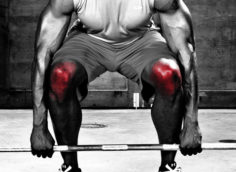Some lifters struggle with the hip hinge. To master that foundational movement pattern, they don't need the extra weight or speed associated with most hip hinge exercises, like kettlebell swings or deadlifts.
If someone's unable to bend at the hips or take a bow, making this movement pattern more challenging will only keep them from learning to proper way to do it. That's where this comes in:
The Banded Pull-Through
How does it help groove the hip hinge?
When you do this, you'll be forced to drive at the hips as well as the knee in order to stay upright and maintain balance, all without a coach having to cue this essential action.
And it's not just for those struggling to hinge. Since the band provides variable resistance through the entire movement, you can target weak ranges of motion with hip extension. More specifically, end range or terminal hip extension where many seem to come up short, especially during deadlifts.
The bands really begin to load the hips and force more muscular contraction to match near the top of the movement. So even if your hip hinge is fine, this can still work as an accessory move.
Why use a band?
Normally, you'll see people do the pull-through with cables or even a sled and a rope. But if you don't have access to either, just loop a Superband around a rack pillar and you're good to go. The downfall to the drill is the direct lack of tension that can be utilized with the band, but you can take care of that with other exercises.
Who will benefit the most?
The band is most appropriate in teaching end-range hip extension, and can be programmed as either a mobility or corrective exercise, or recovery lift in between intense work sets for non-competing muscle groups.
People with a history of low-back issues, or those that are currently suffering from an injury, can benefit from this drill too. More than likely, there exists some degree of recruitment dysfunction in the region that the band can help restore, along with removal of direct axial loading to the spine itself since tension is decreased at the bottom of the movement.





